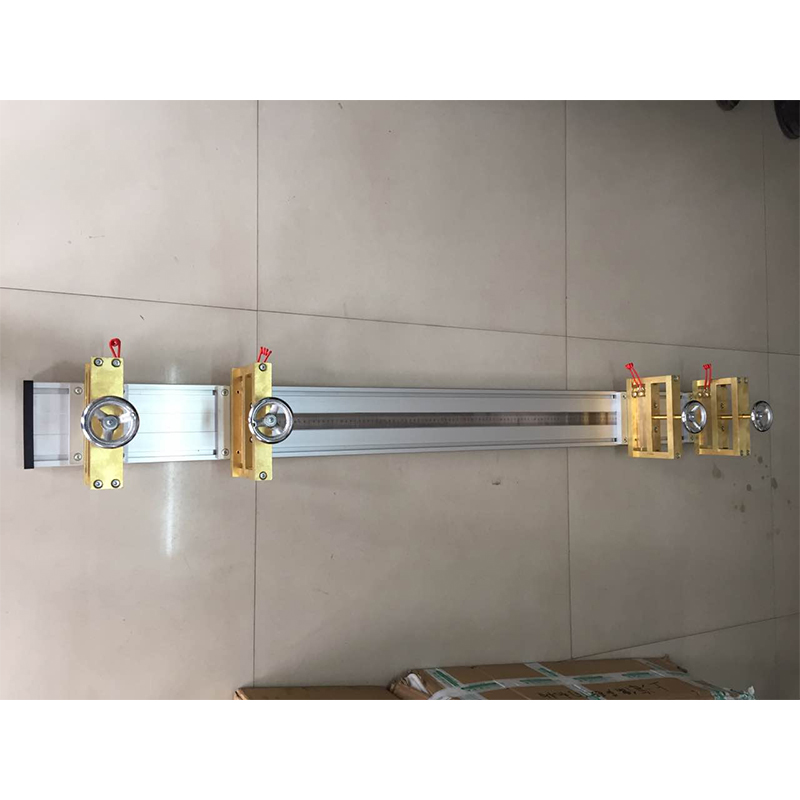tensile tester grips
Understanding Tensile Tester Grips Essential Tools for Material Testing
Tensile testing is a crucial procedure in materials engineering that measures a material's strength and ductility. One of the key components in tensile testing is the grips, which hold the specimen firmly during the test to ensure accurate and reliable results. Grips play a vital role in preventing slippage and ensuring that the specimen is subjected to uniform tension until failure.
Types of Grips
There are various types of grips used in tensile testing, each designed for specific applications and materials. The most common types include
1. Mechanical Grips These grips utilize mechanical clamping mechanisms, such as bolts or screws, to secure the specimen. They are often used for materials that can bear high forces without deformation. Mechanical grips are versatile and can accommodate a range of specimen sizes and shapes.
2. Hydraulic Grips Hydraulic grips use fluid pressure to exert a clamping force on the specimen. They provide a more uniform grip and are particularly advantageous for testing materials that may deform under high pressure. These grips are commonly used in automated testing systems, allowing for quick specimen changes and adjustments.
3. Electromagnetic Grips Utilizing electromagnetic forces, these grips can handle a wide variety of materials without causing damage. They are particularly useful for delicate specimens or when dealing with nonmetallic materials that may fracture under traditional clamping methods.
Importance of Grip Design
The design of tensile tester grips is critical to the integrity of the testing process. Proper grip design ensures that the specimen is held securely throughout the test, reducing the likelihood of slippage or premature failure. Factors such as the type of material being tested, the size and shape of the specimen, and the testing environment all influence grip selection.
tensile tester grips

An ideal grip should distribute the clamping force evenly across the specimen to minimize stress concentrations. It should also be easy to use, allowing for quick specimen placement and removal while maintaining consistent repeatability for multiple tests.
Considerations for Grip Selection
When selecting appropriate grips for tensile testing, several factors should be taken into account
1. Material Type Different materials respond differently to tension. Hard materials may require stronger grips, while softer materials may require more gentle handling to avoid permanent deformation.
2. Test Standards Various industries have specific standards for tensile testing, such as ASTM or ISO. Ensuring that the selected grips meet these standards is essential for compliance and accuracy.
3. Specimen Geometry The shape and size of the specimen significantly affect grip choice. Grips must be compatible with the specimen’s profile and should not introduce additional stress concentrations that could lead to failure.
4. Ease of Use The ease with which grips can be operated is essential, especially in high-throughput environments. Automated or semi-automated grips can save time during testing.
Conclusion
In conclusion, grips are an indispensable part of the tensile testing process. They ensure accurate data collection by holding materials securely during tests. Choosing the right type of grip involves careful consideration of the material properties, testing standards, and specimen geometry. With advancements in grip technology, researchers and engineers can achieve more reliable test results, leading to better product development and quality assurance in various industries. Understanding the nuances of tensile tester grips ultimately contributes to the advancement of material science and engineering.
-
The Role of Tensile Force Testers in Quality Control and Material Science
NewsAug.01,2025
-
Maintenance and Safety Tips for Aging Ovens
NewsAug.01,2025
-
Density Balance in Forensic Science
NewsAug.01,2025
-
Advanced Optical Measurement Technologies
NewsAug.01,2025
-
A Buyer’s Guide to Tensile Test Machines
NewsAug.01,2025
-
Why the Conductor Resistance Constant Temperature Measurement Machine Redefines Precision
NewsJun.20,2025
 Copyright © 2025 Hebei Fangyuan Instrument & Equipment Co.,Ltd. All Rights Reserved. Sitemap | Privacy Policy
Copyright © 2025 Hebei Fangyuan Instrument & Equipment Co.,Ltd. All Rights Reserved. Sitemap | Privacy Policy
